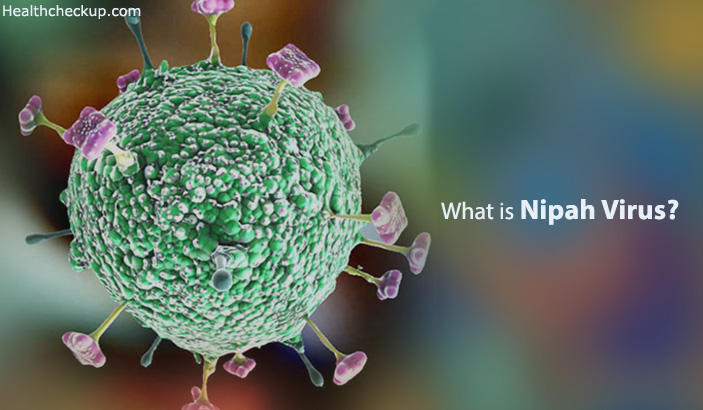What is Nipah Virus?
A Nipah Virus outbreak spreads fear due to the lives it claims. Nipah is a zoonotic viral pathogen. It is transmitted from animals to humans. The fruit bat is the main host of the Nipah Virus. Pigs play the role of intermediate host in the process of infecting humans. The World Health Organization has allocated Nipah Virus Blueprint Priority in its categories of diseases. It has the ability to lead to a public health emergency.
Notable outbreaks of Nipah Virus are the 1998 outbreak in Malaysia, the 2004 Nipah Virus Bangladesh outbreak, and the 2018 Kerala Nipah Virus outbreak.
In recent decades, the emergence of Nipah Virus and other henipaviruses has been noted to the parallel emergence of zoonotic viruses. Such viruses include the Ebola Virus, SARS coronavirus and Marburg virus. The 2018 Kerala Nipah Virus Outbreak paralleled an Ebola virus outbreak in Africa’s Congo. Human encroachment on wildlife habitats increases overlap of fruit bats and human settlement. This increases the chances of a Nipah Virus outbreak.
Nipah Virus Symptoms
Symptoms of Nipah Virus infection are a headache, disorientation, fever, confusion and drowsiness. Abdominal pain, coughing, nausea, blurred vision, vomiting and problems with swallowing are common too. Some people with the virus have seizures and may become comatose. Medical ventilation is needed for comatose patients. If the disease is severe, deterioration in their conscious state happens. Severe hypertension with a very high temperature and fast pulse may then develop later.
In a Nipah Virus Outbreak take the Following Personal Protective Measures:
- Avoid contact with infected persons.
- Avoid exposure to sick pigs or horses.
- Do not eat raw fruits or drink raw sap from date palms.
- Exercise good, Maintain hygiene and Cleanliness.
- Be on the lookout for symptoms of Nipah Virus infection.
- Seek medical attention early if you develop symptoms of infection.
Nipah Virus Causes
Nipah Virus outbreaks are caused by rapid transmission of the virus within populations. Better alertness and response in recent years have seen Nipah Virus outbreaks quickly contained. The World Health Organization is often at the forefront of containment efforts. Specialized care is also increasingly available to the people infected with Nipah Virus.
If you show three or more symptoms of Nipah Virus infection, it is good to seek medical attention. This is especially important during outbreaks. People living in areas prone to Nipah Virus outbreaks should also exercise increased alertness to symptoms. Early diagnosis and medical relief increases your chances of surviving infection with Nipah Virus.
Nipah Virus Transmission
Studies in Australia found that the Nipah Virus is endemic to the bat population. The virus infects bats and remains in their bodies without harming them. This forms a reservoir of the virus. Nipah Virus is transmitted from the fruit bat to horses via a bite. Horses then infect humans through contact with their body fluids.
Person to person Nipah Virus transmission is very commonly seen in India and Bangladesh. It occurs in the caregivers attending to index cases and the family members of the infected. Neighbours too may be affected in person to person transmission. In some rare cases, there is a direct transmission of Nipah Virus from an infected bat to a person.
Nipah Virus Prevention
A number of interventions are used around the world to prevent Nipah Virus outbreaks and proliferation in bats. There is a vaccine for horses which are important in transmitting the virus to humans. Diagnosis of the virus in horses is easy with a stall-side test.
In people, there is post-exposure treatment. Experimental vaccines may exist in various countries. Reducing the impact of deforestation is an important measure in Nipah Virus prevention. The flying fox bat loves to feed in the trees. Planting trees restore this important feeding ground and reduce contact between the bats and the horses.
- Nutritional stress leads to relocation of bat populations that may then lead to Nipah Virus outbreaks.
- Trees planted in reforestation initiatives include the fruit trees that the bats prefer. They reduce nutritional stress and provide excellent buffer zones between areas where people are settled and bat populations.
Nipah Virus Treatment
There is no single cure for Nipah Virus or definitive treatment regime. Supportive measures are extended to infected individuals. Prevention of secondary infection is important for successful management of infection with Nipah Virus.
Efforts in awareness and surveillance complement ongoing research in Nipah Virus and its control. Bat ecology is included in research due to seasonality. Reliable laboratory assays enable fast detection of Nipah Virus infection in livestock and people. Infection with Nipah Virus is best handled in hospital settings with strict enforcement of infection control practices.
In the 1998 Malaysian outbreak of Nipah Virus, an antiviral drug was tested and gave encouraging results. Further studies required to be done on the drug. There is sadly no Nipah Virus vaccine. In the year 2012, a trial vaccine was used in a study and found to help African Green Monkeys develop immunity from Nipah Virus.
Medically Reviewed By

Professionally, a trained Microbiologist and Plant operator, Eustace is an experienced health content writer who is passionate about helping people lead a healthy life.









